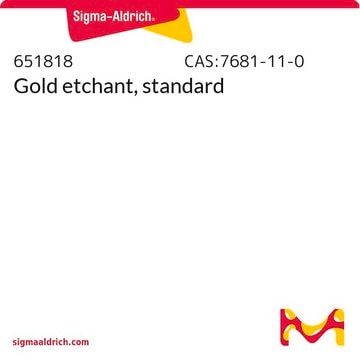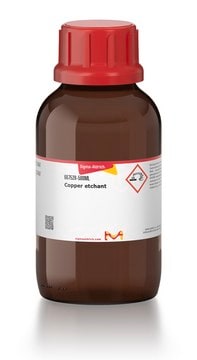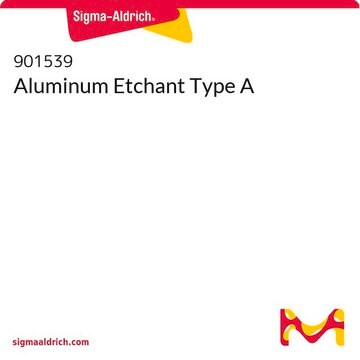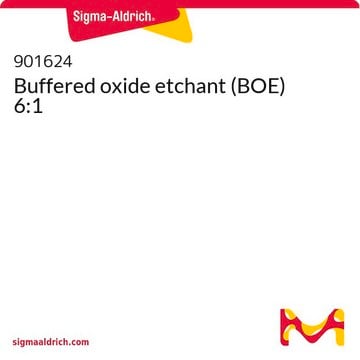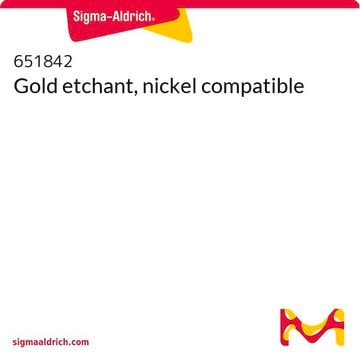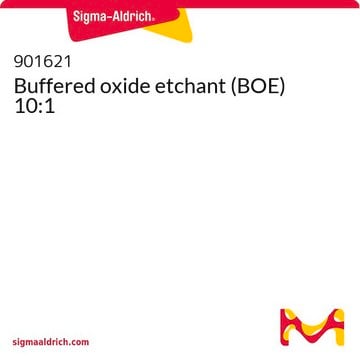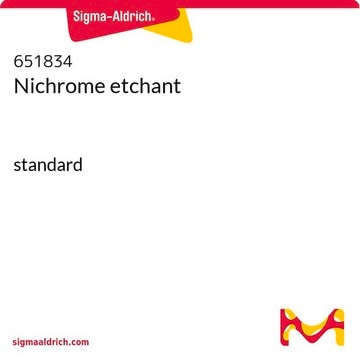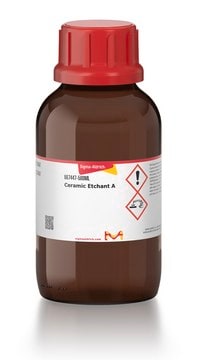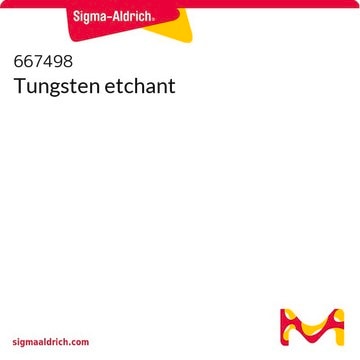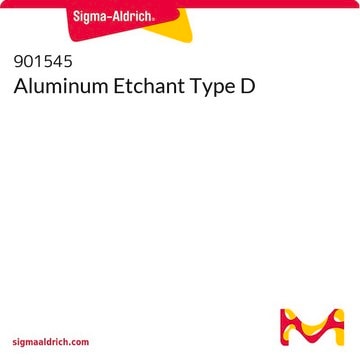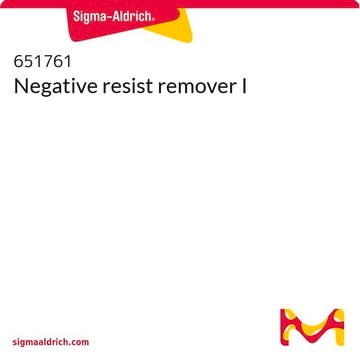651826
Chromium etchant
standard
Synonym(s):
Cr etching solution
About This Item
Recommended Products
grade
standard
composition
volatiles, 85%
color
orange
bp
100 °C/1 atm
density
1.16 g/mL at 25 °C
General description
- Appearance - Clear orange
- pH - Acidic
- Etch Rate at 40 °C - 40 Å/second
- Etch Capacity (rate declines at ~70%) - 65 g/gallon
- Shelf Life - 1 year
- Storage Conditions - Ambient
- Filtration - 0.2 µm
- Recommended Operating Temperatures - 20-80 °C (30-40 °C most common)
- Rinse - Deionized water
- Photoresist Recommendations - KLT6000 Series, KLT 5300 Series, HARE SQT (SU-8 type), TRANSIST, or PKP -308PI
- Select Compatible Materials - Au, Ti, oxide, nitride, Si
- Select Incompatible Materials - Al, Ni, Cu, NiCr
- Compatible Plastics - HDPE, PP, PTFE, PFA, PVC
- Isotropy - Isotropic
- Incompatible Chemicals - Strong bases
Application
Features and Benefits
Signal Word
Danger
Hazard Statements
Precautionary Statements
Hazard Classifications
Aquatic Chronic 2 - Eye Dam. 1 - Met. Corr. 1 - Ox. Liq. 2 - Skin Corr. 1B - Skin Sens. 1
Supplementary Hazards
Storage Class Code
5.1B - Oxidizing hazardous materials
WGK
WGK 3
Flash Point(F)
Not applicable
Flash Point(C)
Not applicable
Certificates of Analysis (COA)
Search for Certificates of Analysis (COA) by entering the products Lot/Batch Number. Lot and Batch Numbers can be found on a product’s label following the words ‘Lot’ or ‘Batch’.
Already Own This Product?
Find documentation for the products that you have recently purchased in the Document Library.
Customers Also Viewed
Protocols
Photoresist kit offers pre-weighed chemical components for lithographic processes, with separate etchants for various substrate choices.
Our team of scientists has experience in all areas of research including Life Science, Material Science, Chemical Synthesis, Chromatography, Analytical and many others.
Contact Technical Service